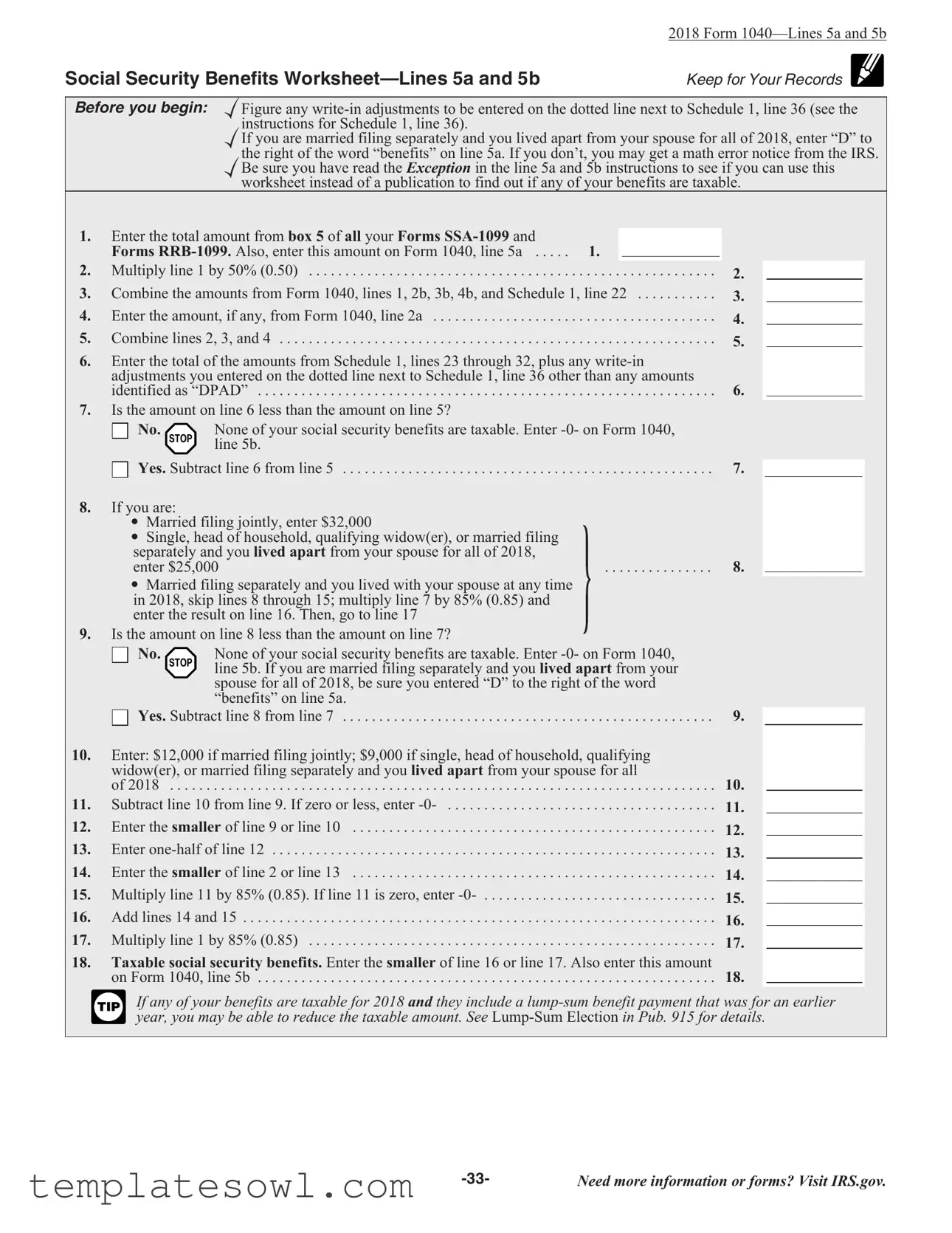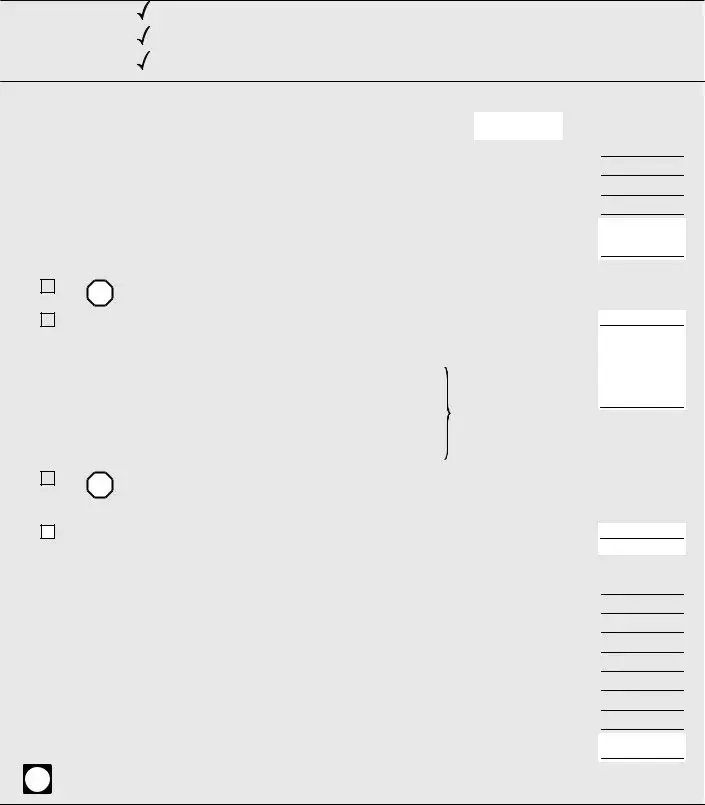What is the purpose of the Lines 20A and 20B form?
The Lines 20A and 20B form is a Social Security Benefits Worksheet for completing your 2018 Form 1040. It helps determine whether any of your Social Security benefits are taxable. This worksheet guides you step-by-step through the calculations needed to report your benefits correctly on your tax return.
Who needs to use this form?
If you received Social Security benefits and are filing your federal tax return for 2018, you may need this worksheet. It's especially necessary if you are unsure if your benefits are taxable, based on your combined income and filing status.
What information do I need to complete the worksheet?
Before starting, gather all relevant documents. You’ll need Form SSA-1099 or RRB-1099, which details the total amount of Social Security benefits received. Additionally, have your Form 1040 and any other income forms handy to determine your total income and deductions required for calculations.
What does it mean if my Social Security benefits are taxable?
Taxable Social Security benefits mean that a portion of your benefits will be included in your gross income and thus subject to federal income tax. The amount that is taxable depends on your total income and filing status, as outlined in the calculations on the worksheet.
How do I know if any of my benefits are taxable?
You will follow a series of calculations on the worksheet. If your total income combined with half of your Social Security benefits exceeds certain thresholds—like $32,000 for married couples filing jointly or $25,000 for single filers—some or all of your benefits may be taxable.
What if I lived apart from my spouse for all of 2018?
If you and your spouse lived apart for the entire year and you are married filing separately, be sure to enter "D" next to the word "benefits" on line 5a. This alerts the IRS that you qualify for different treatment regarding your benefits, which can affect whether they are taxable.
What should I do if I received a lump-sum payment of benefits?
If any of your benefits were received in a lump-sum payment for an earlier year, you might be able to reduce the taxable amount. Refer to the Lump-Sum Election guidelines in IRS Publication 915 for instructions on how to handle this situation properly.
What if my calculations indicate none of my Social Security benefits are taxable?
If your calculations show that none of your benefits are taxable, you should enter -0- on Form 1040, line 5b. That's the end of the process for your Social Security benefits—no tax is owed on those amounts.
What do I do if I have further questions or need more forms?
If you need additional information or forms, visit the IRS website at IRS.gov. They provide comprehensive resources and guidance to help you navigate your tax questions and concerns. You can also find the forms you may need for your filings.


